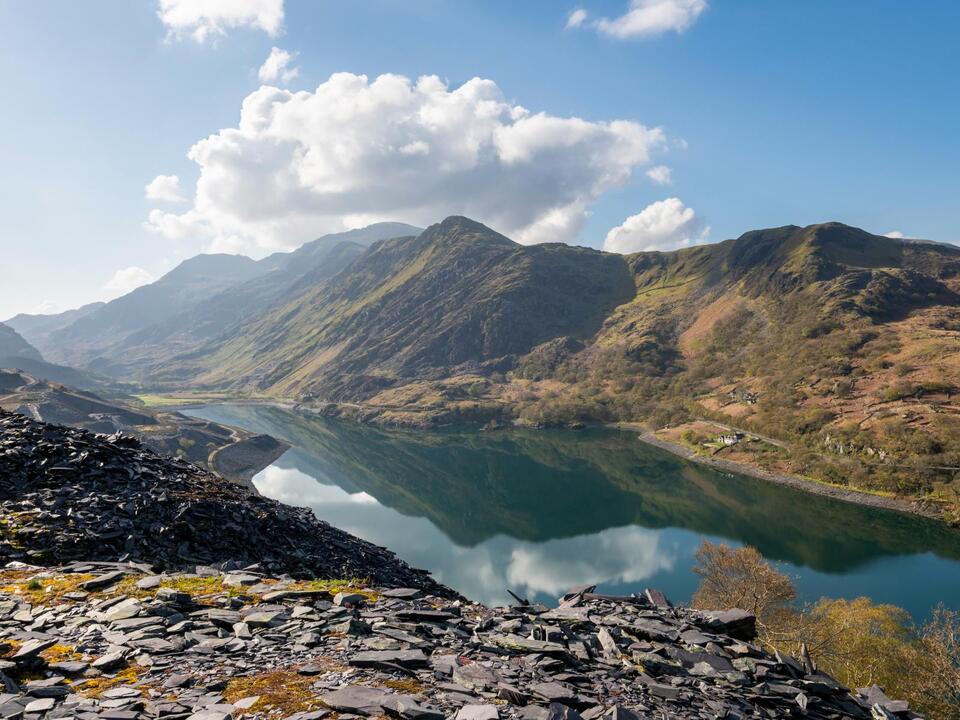Physical Address
304 North Cardinal St.
Dorchester Center, MA 02124
Physical Address
304 North Cardinal St.
Dorchester Center, MA 02124

The deserted quarry above Llanberis in the Eryri National Park, formerly Snowdonia, was once a bustling hub of the slate industry. This trade profoundly influenced the social dynamics, politics, and even the artistic heritage of Wales. Although its significance diminished over time, recent developments are set to restore Welsh slate’s historic prominence.
This revival is being fueled by a substantial grant aimed at transforming an existing museum located at the foot of Wales’s tallest peak, Yr Wyddfa, or Mount Snowdon. This initiative aims to bring slate back into the central narrative of Wales’s cultural history.
“Our National Slate Museum already tells the story of the people, their culture, and their way of life, as well as the survival of the Welsh language,” commented Jane Richardson, chief executive of Amgueddfa Cymru – Museum Wales. “But we believe there’s so much more we can do. This new funding is a milestone that will enable us to connect with communities across Wales and the world.”
The National Slate Museum, Amgueddfa Lechi Cymru, has received an initial grant of £400,000 to lay the groundwork for a modern visitor attraction. This museum is set to become the focal point of a new UNESCO world heritage site. Three years ago, the region—known as Wales’s slate landscape—earned this recognition for its pivotal role in “roofing the 19th-century world.”
The new grant is part of a larger National Lottery Heritage Fund award, which totals over £15 million and is distributed among various industrial heritage sites across Britain. The museum aims to apply for an additional grant of £9.4 million to complete the project.
Welsh slate, which is ancient, strong, waterproof, and easy to cut, gained worldwide acclaim a century and a half ago, drastically altering life in Wales. While the contributions of coal miners have long been acknowledged, the critical role of Welsh slate in the global market has often been overlooked.
The dramatic, scarred landscape left by quarrying serves as a stark reminder of an industry that has now significantly reduced in scale. Once employing hundreds of thousands, the slate industry now supports only a few hundred workers.
A century ago, Dinorwig miners would arrive at dawn from surrounding villages, even from as far as the Isle of Anglesey. They would work on their allotted sections of rock on the terraced slopes, equipped with shelters to hide whenever the warning of the next dynamite blast was heard. Small on-site hospitals, funded by “the hospital shilling,” provided essential medical care for injured workers.
Opened in 1972, the current slate museum is located in Grade I-listed Victorian workshops that were originally used to prepare slate tiles for sale. The site also showcases a terrace of quarrymen’s cottages, originally from Bethesda, along with working locomotives and the UK’s only functional wagon incline track. A colossal turning water wheel adds a significant wow factor to the museum.
The curators aim to restore the workshops closer to their original operational state, allowing visitors to explore the site under cover, just in case the Welsh weather turns inclement. The focus remains on illustrating the vital role the quarries played in the rapid development of north Wales’s villages and towns.
The Great Penrhyn Quarry strike, which devastated Bethesda from 1900 to 1903, left the community permanently divided. Today, tourists flock to the same quarry for exhilarating zip wire activities.
Quarrymen’s canteens, or cabans, were central to social life and helped spread the Welsh language among workers from outside regions. These cabans also became hotbeds for political and artistic discussions, contributing significantly to Welsh culture.
Inside these high-beamed cabans, quarrymen debated politics and unionisation while sipping tea from an ever-boiling kettle known as “the fountain.” These rooms also became cradles of modern Welsh poetry and singing, with frequent competitive arts festivals known as mini Eisteddfod.
Next to the cabans, slate splitters used age-old techniques passed down through generations to shape and “dress” tiles for sale. While machines now handle much of this work, the trickiest pieces still require skilled hands. Expert splitters can read the slate and detect flaws in the grain, with water making the tiles easier to split and reducing the grey dust that quarry owners once claimed was beneficial to health.
The landscape around Llanberis, marked by its rugged beauty, retains a timeless allure. In 1798, famed artist JMW Turner captured this romantic scenery in his painting of Dolbadarn Castle, a view that remains largely unchanged despite industrial transformations.
Fittingly, the museum’s plans include refurbishing its art gallery spaces. “Through the development of new creative spaces, we will bring the national collection and new exhibitions to north Wales for the first time,” noted Richardson.
Source: RA Kearton/Getty Images



